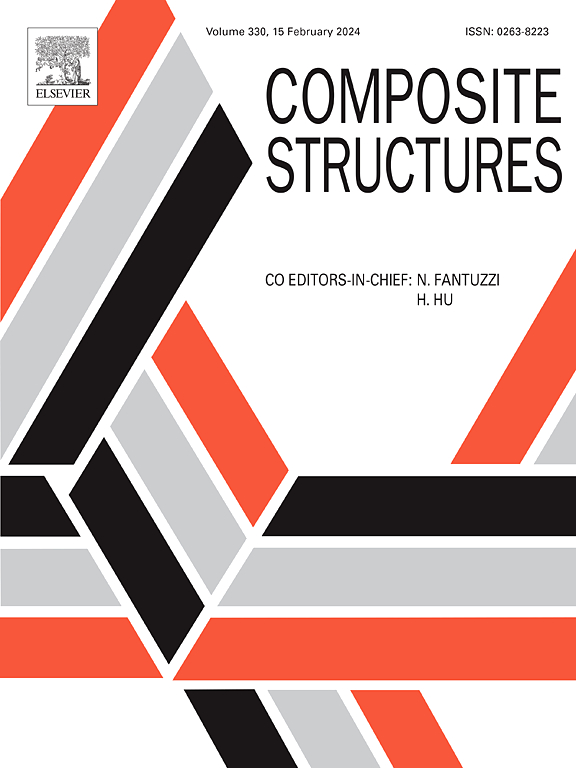热氧环境下Cf/ZrB2-SiC复合材料氧化损伤及残余力学性能分析
IF 7.1
2区 材料科学
Q1 MATERIALS SCIENCE, COMPOSITES
引用次数: 0
摘要
建立了用有限元法求解的扩散-反应损伤方法,模拟了碳纤维增韧超高温陶瓷(Cf/ZrB2-SiC)复合材料在高温氧化环境下的微尺度氧化行为。该模型由质量守恒方程和扩散反应动力学理论推导而来,通过引入有效扩散系数和反应项将两者耦合。通过动态热分析得到了表观动力学参数,为模拟涂层与纤维之间的反应差异提供了可靠的数据。该模型考虑了碳纤维的氧化失重和Cf/ZrB2-SiC复合材料基体裂纹引起的氧化损伤。氧化损伤的演化是温度、氧浓度和应力的定量函数。对氧化控制因素的敏感性进行了综合分析。利用氧化模型结合剪切滞后模型进一步预测了不同氧化条件下Cf/ZrB2-SiC复合材料的残余模量。本研究有助于提高Cf/ZrB2-SiC复合材料的抗氧化性设计。本文章由计算机程序翻译,如有差异,请以英文原文为准。
Oxidation damage and residual mechanical properties analysis for Cf/ZrB2-SiC composites in thermo-oxygen environment
A diffusion–reaction damage methodology solved by finite element (FE) scheme is established to simulate the microscale oxidation behavior of carbon fiber toughened ultra-high temperature ceramic (Cf/ZrB2-SiC) composites in high-temperature oxidation environment. The model is derived from the governing equations of mass conservation and diffusion–reaction kinetics theory, which are coupled by introducing effective diffusion coefficients and reaction terms. The apparent kinetic parameters are obtained from dynamic thermal analysis, which provide reliable data to simulate the reactive differences between the coating and the fiber. The oxidation weight loss of carbon fiber and oxidation damage of Cf/ZrB2-SiC composites induced by matrix crack are taken into account in this model. The oxidation damage evolution is quantitatively described as a function of temperature, oxygen concentration and stress. The sensitivity of the oxidation controlling factors is analyzed comprehensively. The residual modulus of Cf/ZrB2-SiC composites under different oxidation conditions is further predicted using the oxidation model combining with shear-lag model. This study can be helpful of improving the Cf/ZrB2-SiC composites oxidation resistance design.
求助全文
通过发布文献求助,成功后即可免费获取论文全文。
去求助
来源期刊

Composite Structures
工程技术-材料科学:复合
CiteScore
12.00
自引率
12.70%
发文量
1246
审稿时长
78 days
期刊介绍:
The past few decades have seen outstanding advances in the use of composite materials in structural applications. There can be little doubt that, within engineering circles, composites have revolutionised traditional design concepts and made possible an unparalleled range of new and exciting possibilities as viable materials for construction. Composite Structures, an International Journal, disseminates knowledge between users, manufacturers, designers and researchers involved in structures or structural components manufactured using composite materials.
The journal publishes papers which contribute to knowledge in the use of composite materials in engineering structures. Papers deal with design, research and development studies, experimental investigations, theoretical analysis and fabrication techniques relevant to the application of composites in load-bearing components for assemblies, ranging from individual components such as plates and shells to complete composite structures.
 求助内容:
求助内容: 应助结果提醒方式:
应助结果提醒方式:


